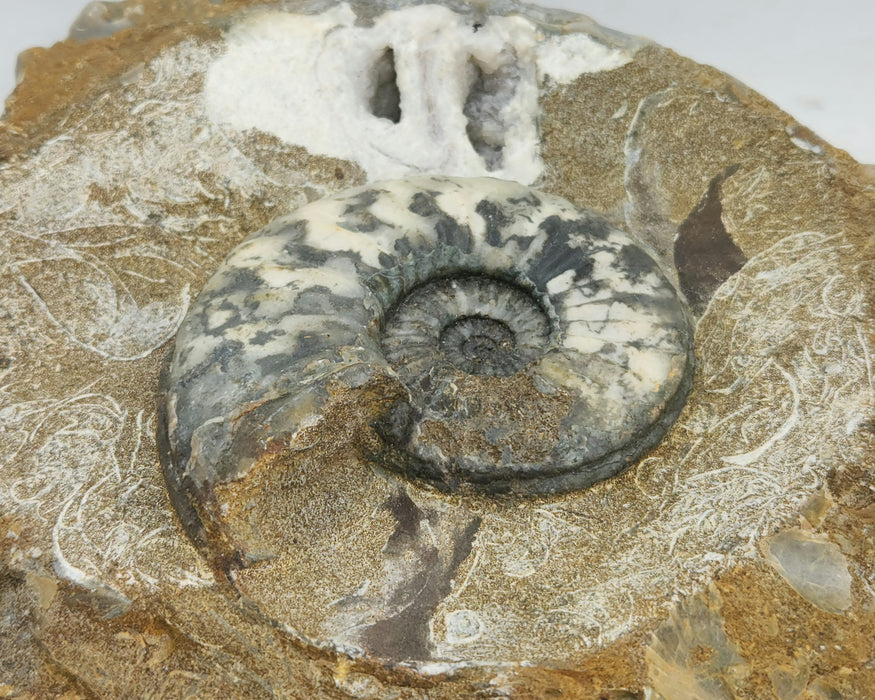
Aegasteroceras sagittarium Ammonite | England
Remaining Ammonite approx. size: 4" x 3.25"
Entire Ammonite approx. size: 7.5" x 6"
Matrix approx. size: 9.25" x 8.5" x 2"
Approx. weight: 4 lbs. 3 oz.
The shell of this ammonite has been naturally replaced by calcite. You can see the calcite crystals at a removed portion of the shell.
Ammonoids are a group of extinct marine mollusk animals in the subclass Ammonoidea of the class Cephalopoda. These mollusks, commonly referred to as ammonites, are more closely related to living coleoids (i.e., octopuses, squid, and cuttlefish) than they are to shelled nautiloids such as the living Nautilus species. The earliest ammonites appear during the Devonian, and the last species vanished in the Cretaceous–Paleogene extinction event.
Ammonites are excellent index fossils, and it is often possible to link the rock layer in which a particular species or genus is found to specific geologic time periods. Their fossil shells usually take the form of planispirals, although there were some helically spiraled and nonspiraled forms (known as heteromorphs).
The name "ammonite" is derived from its spiral shape and fossilized shells, which bear a resemblance to tightly coiled ram's horns. Pliny the Elder (d. 79 AD near Pompeii) referred to these fossils as ammonis cornua ("horns of Ammon") due to the god Ammon (Amun) usually depicted with ram's horns. Many ammonite genera end in -ceras, derived from the Greek word for "horn" (κέρας).
The extinction of the ammonites, along with other marine animals and non-avian dinosaurs, has been attributed to the K-Pg extinction event, marking the end of the Cretaceous Period.



